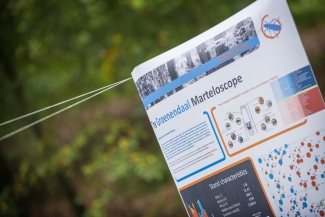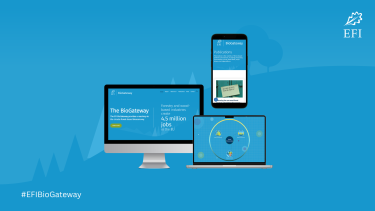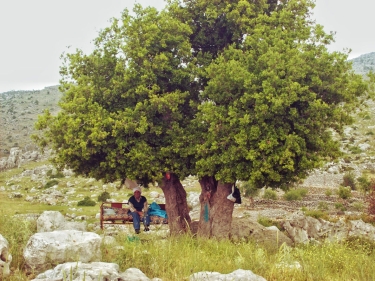Outdoor forest classrooms

Marteloscope sites are like outdoor forest classrooms where the trees are numbered, mapped and measured. They can be used to train foresters and other interest groups how different silvicultural measures may affect forest biodiversity and to what extent. Software running on mobile devices allows virtual tree selection exercises and then displays the results. Participants can immediately see the ecological and economic consequences of their choices. Variations in exercise results initiate discussion and stimulate the exchange of experiences and learning.
Andreas Schuck from the EFI Bonn team is conducting training exercises with different stakeholders from the field of forestry, nature conservation, and academia. The latest training took place at the Falkenberg Marteloscope on 16th of October. It is located in the northern Vosges region of France. Twelve participants representing both forestry and nature conservation were introduced to Marteloscopes and their potential applications followed by a virtual tree selection exercise. The exercise asked for selecting habitat trees while removing high quality trees for economic return. Andreas Schuck and Frank Krumm from the Swiss Federal Institute for Forest, Snow and Landscape Research (WSL) moderated the training jointly with Loïc Duchamp from the Parc Naturel Régional des Vosges du Nord, France (PNRVN). The same virtual tree selection exercise was implemented by groups of two followed by a brief presentation of results and joint discussion. Habitat and economic valuable trees were then looked at more closely in order to challenge the groups on their decisions.
Following the Marteloscope visit, an agreement on the usage of Falkenberg was signed by the Office national des forêts (ONF) and PNRVN. Important pillars of the use are:
- to attract international excursions to Falkenberg and the forest of the northern Vosges region,
- to utilise the Falkenberg Marteloscope to training protected area managers on biodiversity conservation in managed forests at national and regional level, and
- to implement initiatives organised by PNRVN at local level for students and the general public.
Background information on the Marteloscope sites
In the framework of the project Integrated Forest Management Learning Architecture (InForMAr) and its predecessor Integrate+, for each tree in a 1-hectare large, rectangular forest site, the following data is collected:
- tree location (stem base map)
- tree species
- forest mensuration data (breast height diameter, tree height and crown base height)
- timber quality, present and future (estimated)
- microhabitats (key habitat elements and structures serving as ecological niches), and structural elements with high future potential for biodiversity.
Based on the data, the economic value (in Euro) is calculated for each stem based on tree volume, tree assortments and corresponding local timber price lists. Future economic values are estimated by considering the expected future development and growth, applying suitable methods for calculation.
The ecological value (in points) is assessed for each tree. The evaluation depends on the identified microhabitats, taking into account the rarity of a habitat and duration for it to develop.


